 Do you want better results from social media?
Do you want better results from social media?
Have you considered researching your competitors?
If you're not getting the results you want from social media, a little research and the right tool can help you refine your social media strategy.
In this article, you’ll discover how to perform a detailed competitive analysis and improve your social strategy.
Why Competitor Analysis?
Competitor analysis lets you discover how your competitors use social media. You can see how your competitors position themselves on social media, what they share and how their audience responds. You can also find out what social media networks work best for your competitors, what information you should include in your social profile and page bios and what types of status updates get the most engagement.

Listen to this article:
Where to subscribe: Apple Podcasts | Spotify | YouTube Music | YouTube | Amazon Music | RSS
While you can gain these insights for free on your own, it takes time to find multiple competitors‘ social accounts, collect all of the data (followers, engagement, etc.) and then analyze that data.
To show how using a tool can help you gather the data more quickly and present it in an easy-to-analyze format, this article uses Rival IQ as an example.
Now, let's look at how to do social media analysis and apply what you learn to improve your social media strategy.
#1: Create a Landscape With You and Your Competitors
To get started, you'll want to sign up for a free 14-day trial of Rival IQ's service. If you're just doing a one-time analysis of your competitors' social media strategy, you should be able to get it done before the free trial period ends.
Otherwise, you'll want to choose a plan that best fits your needs. For each company (including your own), you'll be able to analyze and monitor one account per social network (Facebook, Twitter, Google+, Instagram and YouTube).
Once you set up your account, create your first landscape by clicking the + button under the Landscape drop-down menu at the top left.
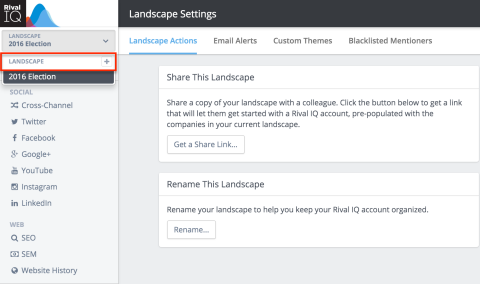
In the dialog box that appears, enter the name for your landscape and click the Create Landscape button.
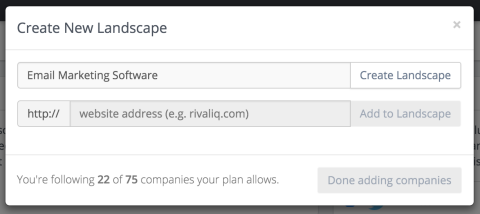
Next, enter the website address for your company and select it from the drop-down list if it appears. Then click the Add to Landscape button. This will allow you to compare your social media presence and content against your competitors'.
Get World-Class Marketing Training — All Year Long!
Are you facing doubt, uncertainty, or overwhelm? The Social Media Marketing Society can help.
Each month, you’ll receive training from trusted marketing experts, covering everything from AI to organic social marketing. When you join, you’ll also get immediate access to:
- A library of 100+ marketing trainings
- A community of like-minded marketers
- Monthly online community meetups
- Relevant news and trends updates
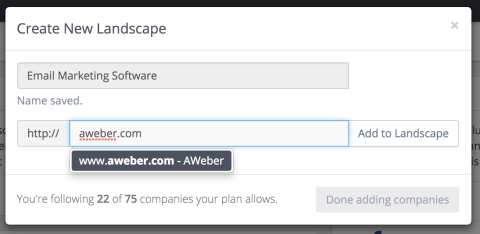
After Rival IQ confirms that your company has been added, continue adding your top competitors. Enter each competitor's website address and click the Add to Landscape button each time. When you're finished adding companies, click Done Adding Companies.
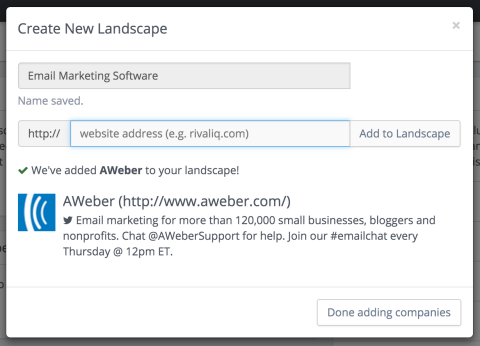
When you click Done, your screen will refresh to show your landscape's dashboard. Rival IQ will confirm the accounts it has found for your company and your competitors. If the companies are new to their system, it might take a little while to update, but usually no more than 24 hours.
If you know that one of your competitors has an account on a network that Rival IQ didn't find, you can hover over it and suggest it to them. They'll usually add it within 24 hours.
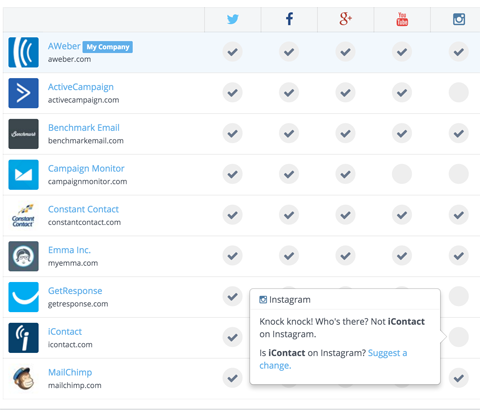
In the above example, the only accounts Rival IQ didn't find were the ones that didn't exist for the specified companies. Once everything is set up, you're ready to start your analysis.
#2: Find Social Engagement Opportunities
Begin your analysis with the social networks where your competitors have profiles and pages. This should tell you at a glance if you're missing a network that might be beneficial for your social media strategy.
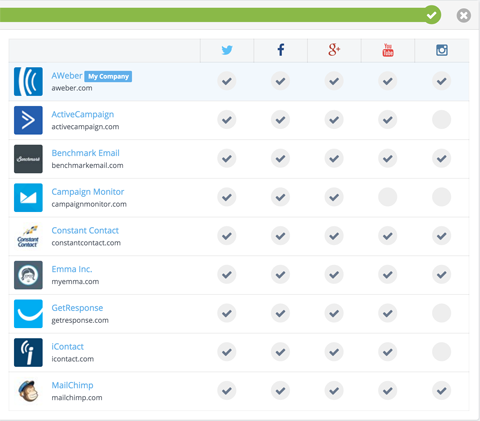
In this case, you might assume that out of all of the networks, Instagram is the least important because a few of your competitors don't have a presence there. But that might not always be true, which you'll see shortly.
In addition to seeing what social networks your competitors are on, check to see which ones they have the largest audiences on. You can do this by clicking the Cross-Channel link in the left sidebar and then clicking on Detailed Metrics at the top.
This reveals a chart where you can see the overall audience size of you and your competitors, including a breakdown of the networks where each company has fans and followers. Hover over each bar to see numbers specific to each social network represented in the chart.
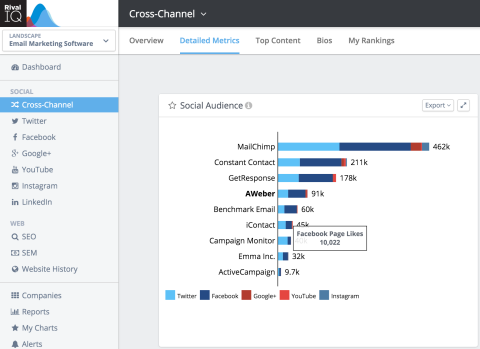
What this chart tells you is that while your competitors have a presence on all of the top social networks, most have the largest audiences on Twitter and Facebook. If you scroll down on this same page, you'll also see two charts showing Social Activity and Social Engagement.
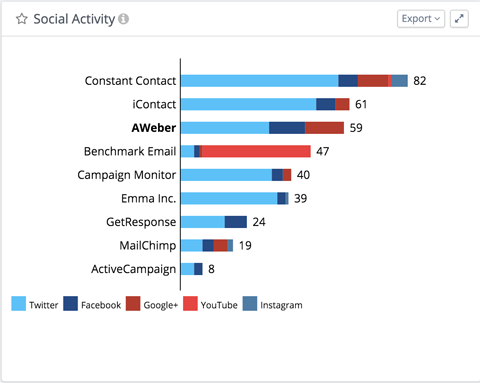
These charts reveal that while each company has large Twitter and Facebook audiences, some are getting more engagement on Instagram. This goes to show that just because your competitors don't have a presence on certain networks or don't have large audiences on those networks, it doesn't mean those networks wouldn't work for you.
In this landscape, you can see that Instagram may be a hotbed of engagement with your target audience.
#3: Review Your Positioning
The next thing you want to do is see how your competitors are positioning themselves on each social network. In particular, look at how they describe their businesses in their profiles and page bios and how they represent themselves in their profile pictures.
You can do this by clicking the Cross-Channel link in the left sidebar and then clicking Bios at the top.
Here, you'll see the bios, descriptions and taglines that the companies use on each social network. Click View All for each network to see the full details.

Discover Proven Marketing Strategies and Tips
Want to go even deeper with your marketing? Check out the Social Media Marketing Podcast! Publishing weekly since 2012, the Social Media Marketing Podcast helps you navigate the constantly changing marketing jungle, with expert interviews from marketing pros.
But don’t let the name fool you. This show is about a lot more than just social media marketing. With over 600 episodes and millions of downloads each year, this show has been a trusted source for marketers for well over a decade.
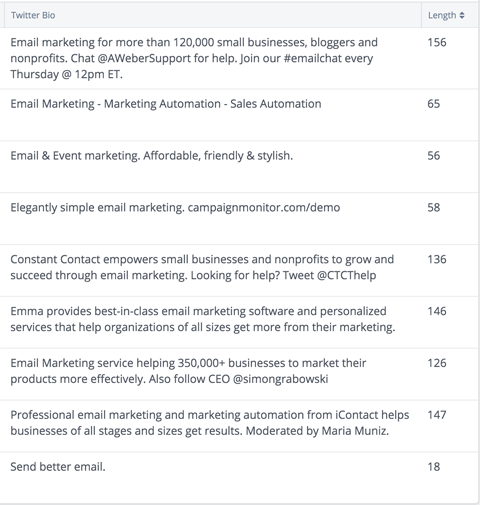
From the above analysis of Twitter bios, you can see that some companies have Twitter chats, some have separate support Twitter accounts and some add a personal touch by including the name of the account moderator or a Twitter account for the CEO. Also, most include a common key phrase in their bios: email marketing.
If you click the Back button above this information, you can view more information from the companies' social accounts, like their Facebook page descriptions.
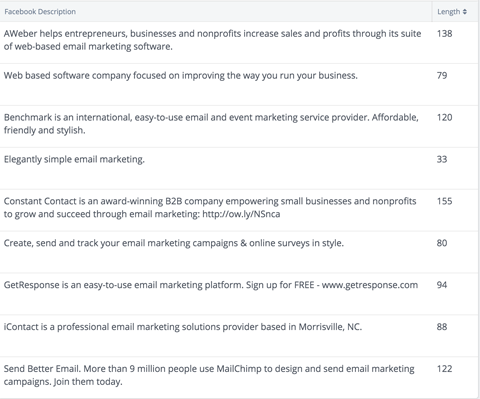
From the above analysis of Facebook page descriptions, you can see how the messaging changes between networks. Most use this field to describe their company, as opposed to specifics of their Facebook marketing strategy.
Click the Back button above this information to view the Google+ tagline for each company to find a short description of each (in most cases).
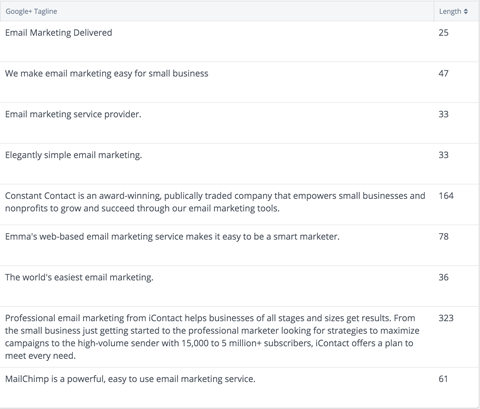
Or see more detailed excerpts about each company by viewing the Google+ page introductions.
If your business has been struggling to write great company bios, an analysis of your competitors will help you get a handle on what to write and where.
#4: See What Updates Work Best on Each Network
Now that you know more about how to position yourself on the top social networks, what type of content should you be sharing and where?
Start by going to the Cross-Channel link in the left sidebar and then clicking Top Content at the top to see (over the last seven days) which of your competitors have the most engaging content, where they're getting the most engagement and on what days.
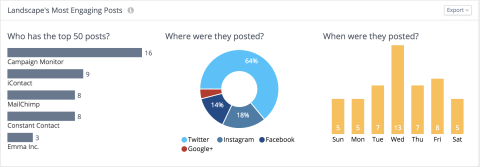
Continue through the links in the left sidebar to get a detailed analysis of content on each network. You may want to change the date range at the top right to analyze the last 30 days' worth of content to get more insights.
When you click on Twitter in the left sidebar and then click on Top Content, you'll see details about the top tweets from each company's Twitter account, including the type and days they were posted. Beneath the summary, scroll down to see each of the top tweets.
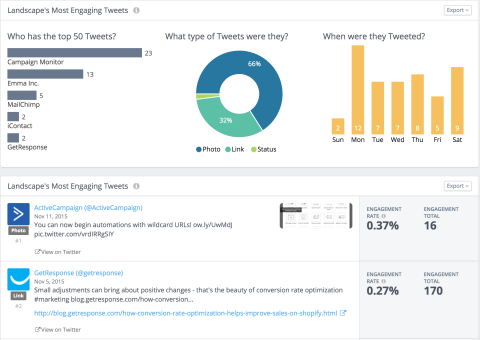
When you click on Facebook in the left sidebar and then click on Top Content, you can view details about the top updates from each company's Facebook page, including the type and days they were posted. Beneath the summary, scroll down to see each of the top updates.
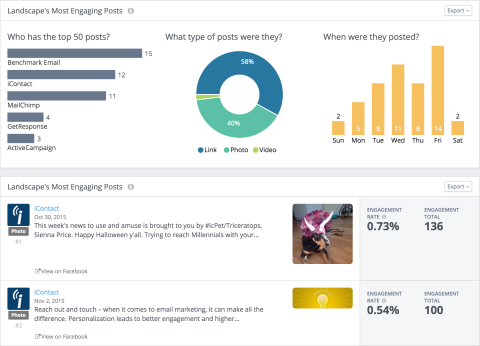
When you click the Google+, Instagram and YouTube links in the left sidebar and then Top Content, you'll see similar analyses. The LinkedIn link only allows you to analyze your own LinkedIn company page content.
Using these different reports, you should be able to get some inspiration about the types of updates you should share on each network based on actual data. This ensures that your updates will receive a better response from similar audiences.
#5: Build Relationships With Top Mentioners
When you click on Twitter in the left sidebar and then click on Mentioners at the top, you'll see details about the top Twitter users who mention the companies in your landscape.
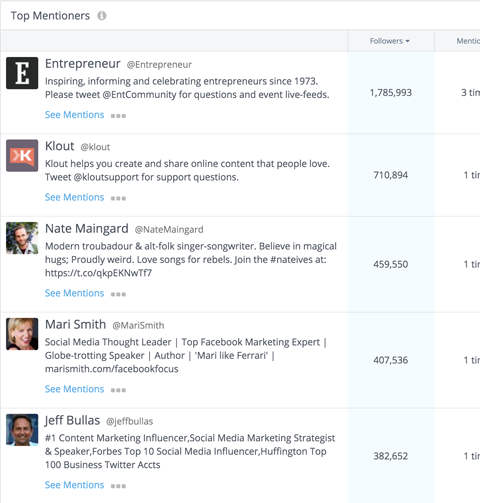
Each includes a See Mentions link so you can see the tweet mentioning the company.
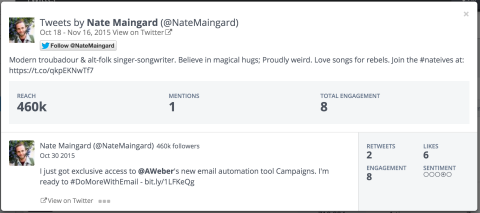
You'll find that the relationships between the mentioners and the company in your landscape vary. Some, like the one above, may be customers and brand advocates. Others may just share content published by a company.
If you find a customer or brand advocate mention of your company, you can thank them for their support and even offer to send them a little gift, like a t-shirt or sticker. If you find a content share from your competitors, you might want to build a relationship with those customers or advocates to see if they'd also be willing to share your content.
Bonus: Go Beyond Social Media Analysis
In addition to the valuable social media data provided by Rival IQ, you can also use it to do research into your competitors' websites and search engine optimization strategies.
In particular, click on the SEO link in the left sidebar and then Positioning at the top to see each company's homepage SEO title tag and meta description.
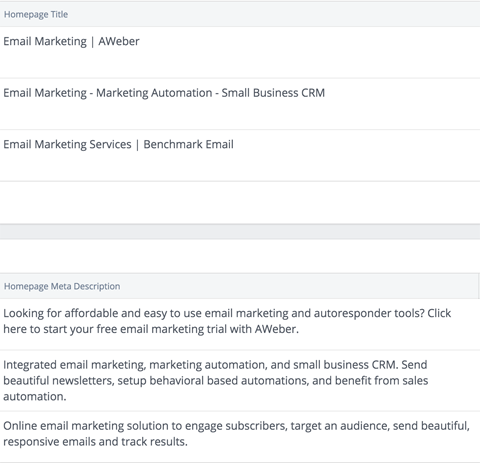
Then click on Detailed Metrics at the top to see which website has the most authority in search and the most backlinks.
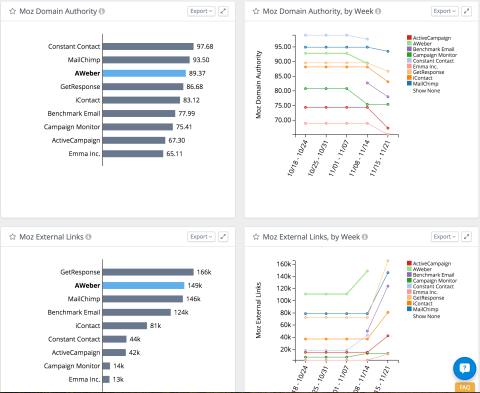
Next, click on the Website History to get a view of changes made to each company's website homepage over several months. This gives you insights into the best web designs, landing page copy and more for your own website.
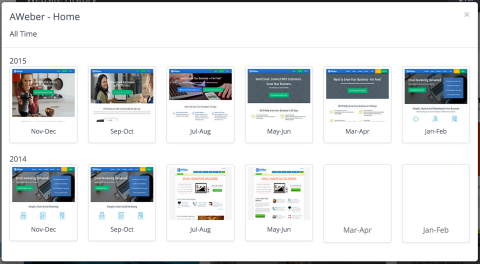
This will ensure that your SEO and website design are in line with your competitors, and with your social media strategy.
Conclusion
As you can see, there's a lot you can learn from your competitors. While you don't necessarily want to copy them in terms of social media strategy, you do want to make sure that you're at least doing as well (if not better) than they are in terms of positioning and content.
What do you think? Have you done competitor research to improve your social media strategy? What did you learn? Please share your thoughts in the comments!

Attention Agency Owners, Brand Marketers, and Consultants

Introducing the Marketing Agency Show–our newest podcast designed to explore the struggles of agency marketers.
Join show host and agency owner, Brooke Sellas, as she interviews agency marketers and digs deep into their biggest challenges. Explore topics like navigating rough economic times, leveraging AI, service diversification, client acquisition, and much more.
Just pull up your favorite podcast app, search for Marketing Agency Show and start listening. Or click the button below for more information.

